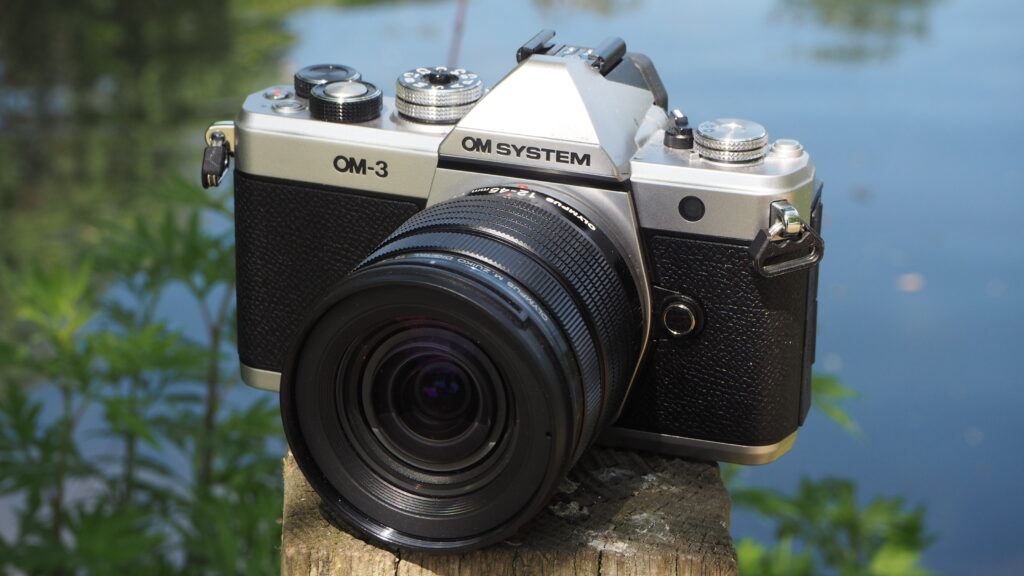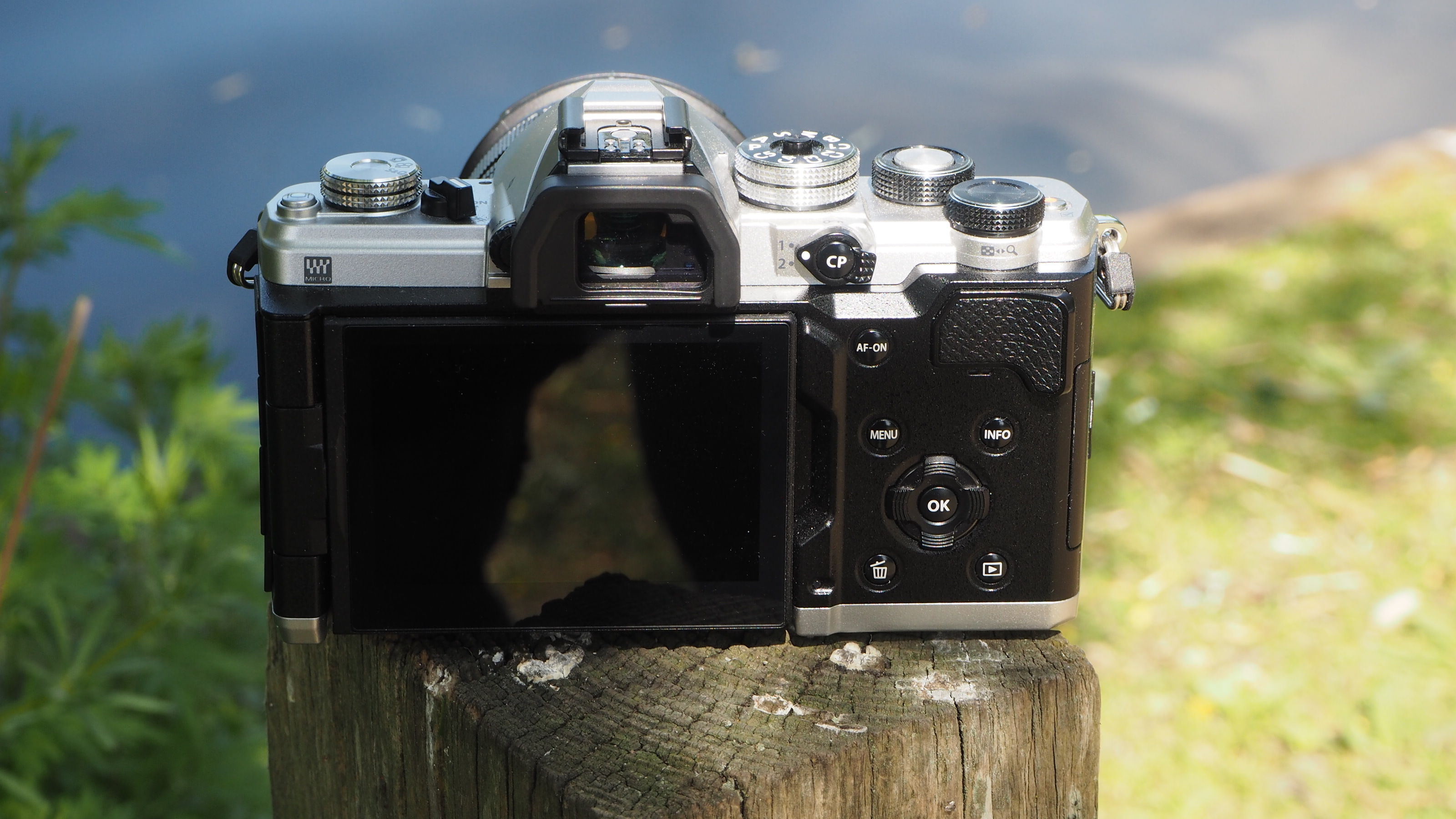Why you can trust Live Science
Our expert reviewers spend hours testing and comparing products and services so you can choose the best ones for you. Find out more about how we test.
Specifications
Sensor size: Micro Four Thirds
Resolution: 20.4 Megapixels
EVF resolution: 2.36 million dots
LCD resolution: 1.62 million dots
ISO: 80 to 102,400
Burst rate: Up to 120fps
Image stabilization: 5-axis, 8 EV steps
Minimum shutter speed: 60 seconds
Autofocus detection range: Down to -8EV
Battery life: Approx 590 shots
Storage: SD memory card, single card slot only
Dimensions (in): 5.5 x 1.8 x 3.5
Dimensions (mm): 139.3 x 45.8 x 88.9
Weight: 3.4 oz (496 g)
The new OM System OM-3 is a digital update of a film SLR of the same name from 1983, incorporating technology recently found in the flagship OM-1 Mark II.
It also reinstates the quirky Creative Dial formerly seen on the Olympus PEN-F, allowing for various colour or mono treatments, while the top plate of the deliberately retro-looking OM-3 similarly features plenty of rangefinder camera-like dials, levers and switches. This is a camera that theoretically should appeal to those who miss the manual controls of the film era, but appreciate the convenience and instant results of the digital age.
While sitting firmly in the hand and feeling robust thanks to a combination of magnesium alloy body and, here, an Olympus 12-45mm f/4 Pro zoom lens, the OM System OM-3 suggests itself as a portable and practical tool for travel, landscape and wildlife photographers. Thanks to the OM-3 also featuring a dedicated Starry Sky Auto Focus option, bulb shooting and Computational Photography modes, it could end up being one of the best astrophotography cameras.
So, how does it acquit itself in practice? Read on to find out.
OM System OM-3 review
Design & comfort
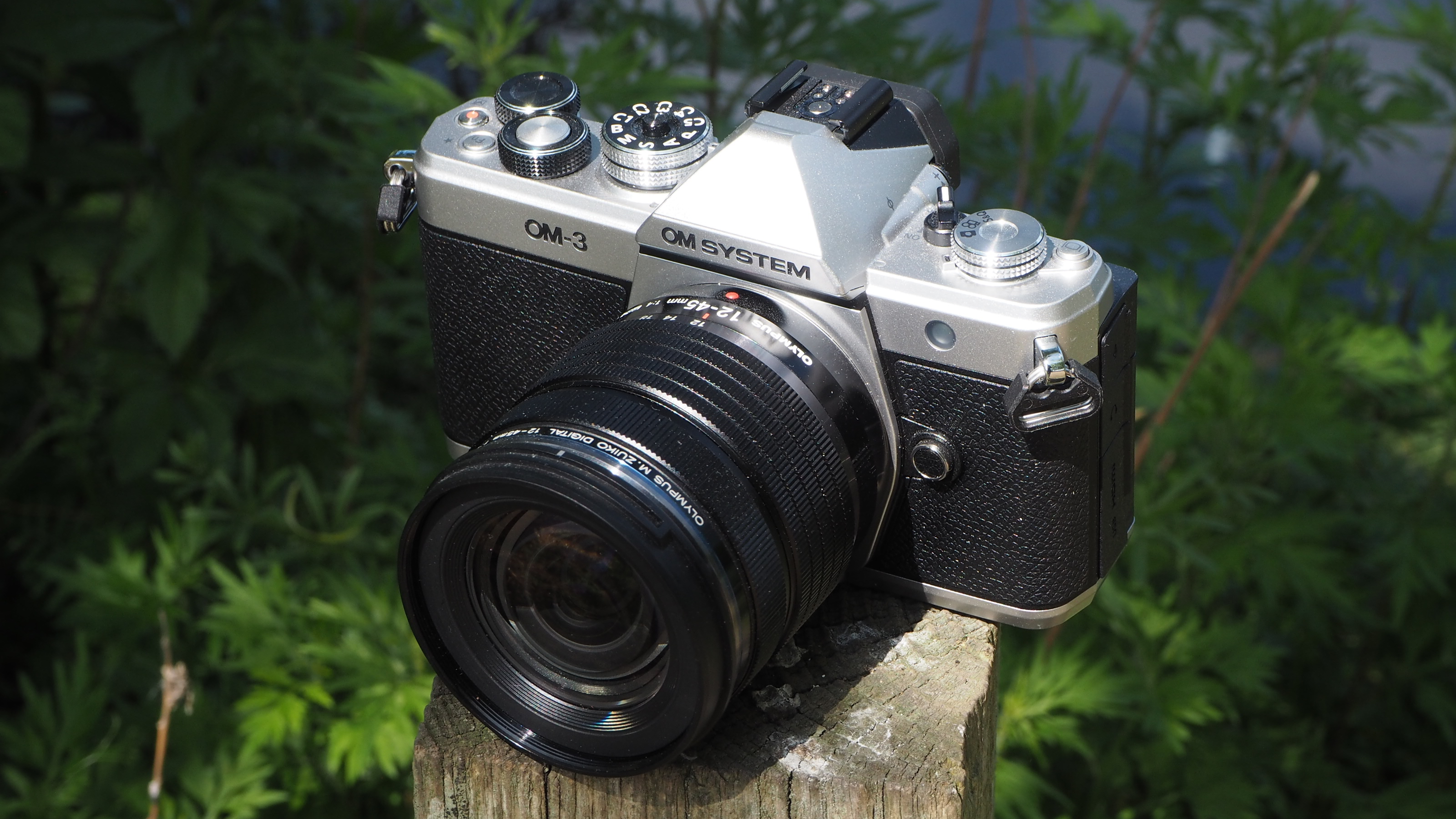
- Lacks a well-rounded handgrip
- Faux leather surface and rear thumb rest provide purchase
- Front and back command dials/control wheels
With a dust-, splash- and freeze-proof body manufactured from magnesium alloy, the OM System OM-3 feels built for the great outdoors. There is sufficient weight and heft here, especially with the 12-45mm f/4 lens attached, for it to sit firmly and steadily in the hand.
Although a raised thumb rest is provided at the rear, what the OM-3 misses in delivering a compact, portable body is a more pronounced handgrip. The lack of a “proper” grip may deter professional users, but it’s one of the only instances here where style triumphs over substance. The essentials required for both stills and video shooting fall readily under the forefinger and thumb, and choosing which dial to spin to fast-forward through the on-screen menus and selections gradually becomes more intuitive with repeated use.
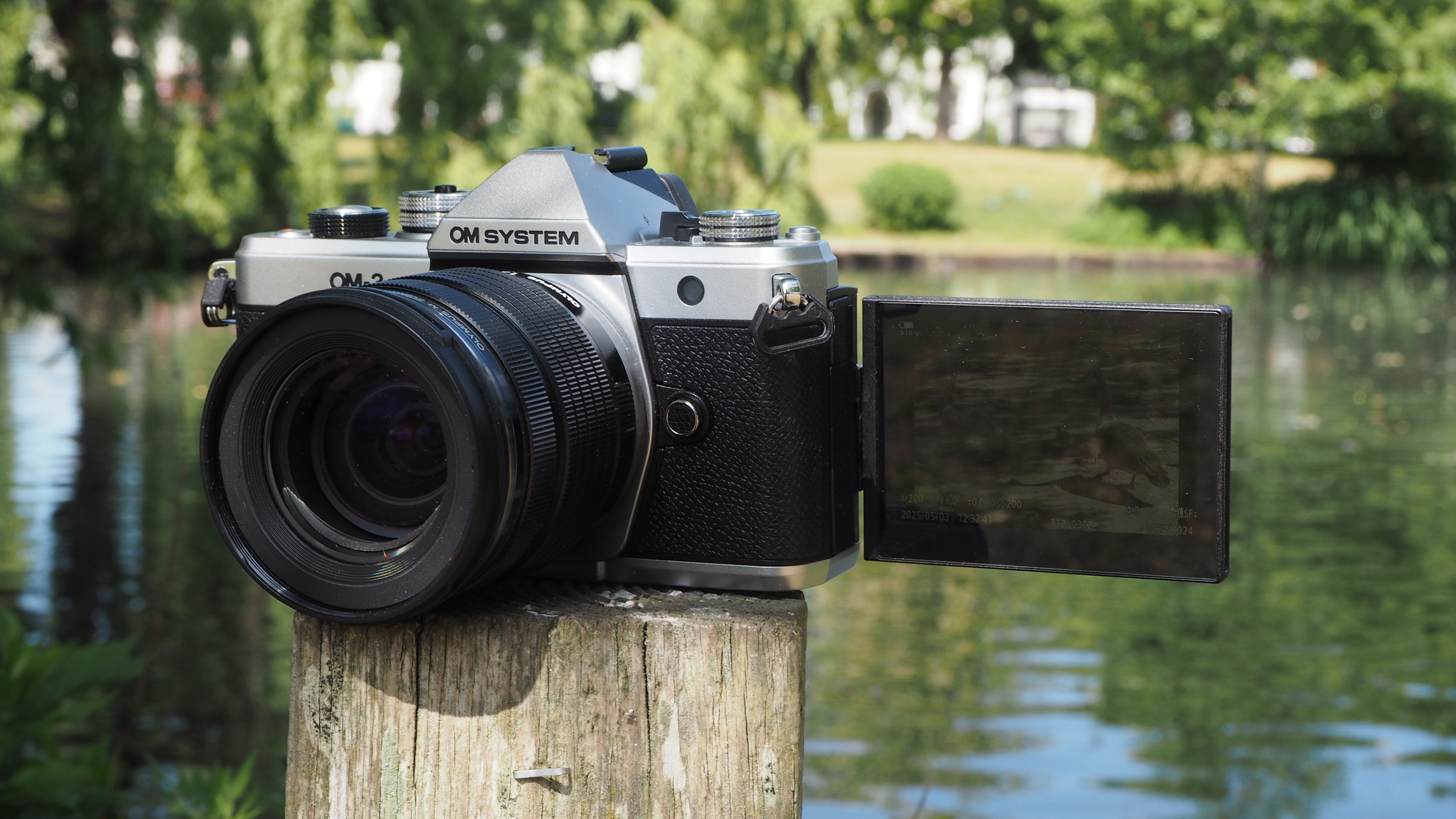
Because the rear-plate LCD can be flipped out from the body, it provides a further means of balancing the camera. This 1.62-million-dot monitor proves especially useful for those otherwise tricky low or high-angle shots, where we would not easily be able to get an eye-level view with the 2.36-million-dot resolution electronic viewfinder (EVF).
As the removable, rechargeable battery is accessed via the base of the camera, access to it is restricted if you have the OM-3 sitting on a tripod. However, the single SD card slot is easily accessed via a separate side slot.
If you don’t mind the lack of a large, rounded handgrip and aren’t daunted by the busy control layout, there is not much to grumble about in terms of the functionality of the OM-3’s design.
Electronic viewfinder & LCD screen
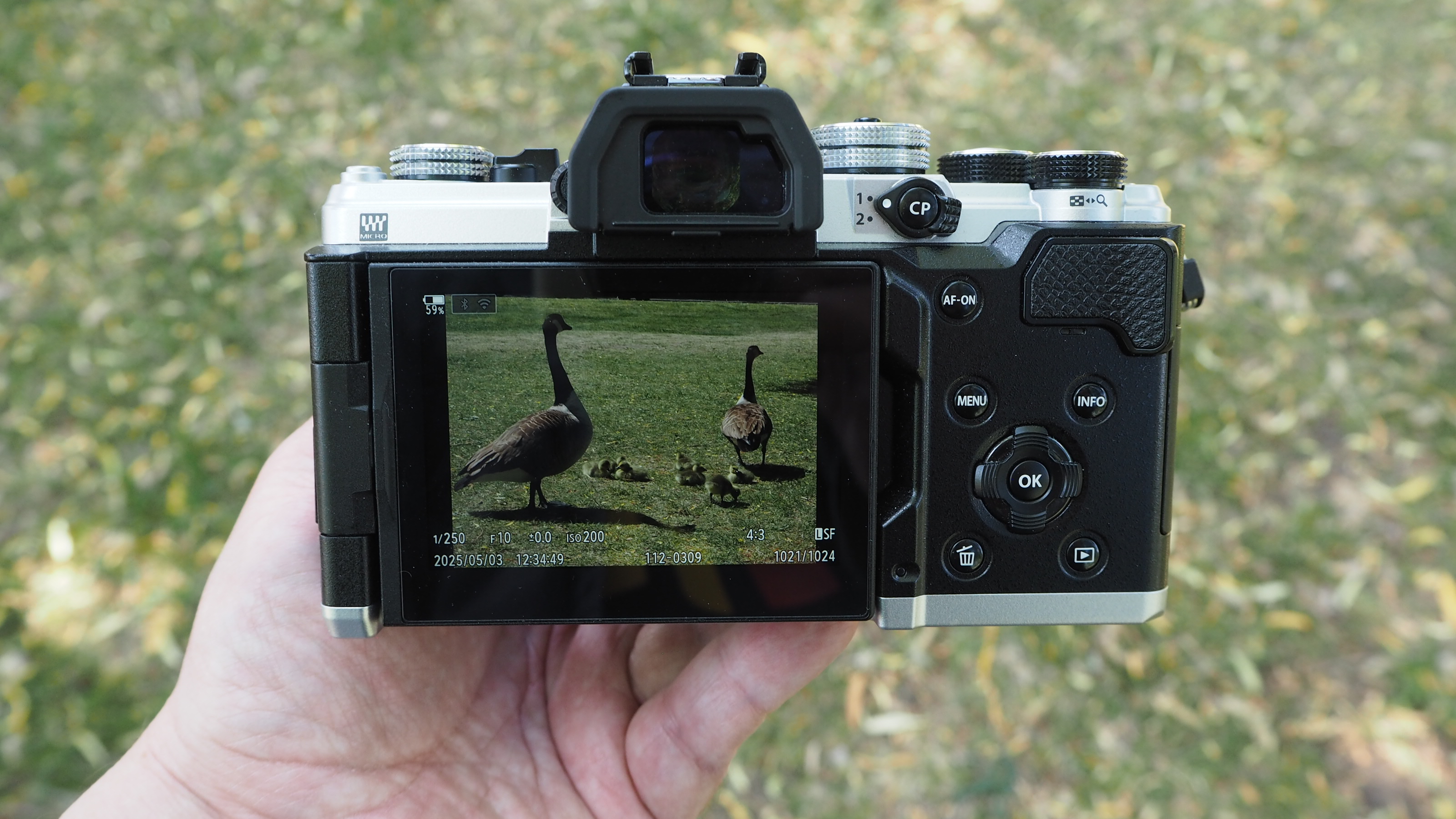
- Fully articulated 3-inch 1.62 million dot LCD touchscreen
- 2.36 million dot EVF is sharp and glitch-free
- Touchscreen capabilities are useful in the dark
Anyone who has used a tilt and swivel LCD will appreciate that it allows the composition of both high and low-angle shots. We took advantage of this flexibility while photographing week-old goslings at our local pond, and a group of deer when we wanted to get low enough to include some foreground. As the screen here is also a touch panel, we can direct focus and fire the shutter with a quick finger tap.
Though they may differ in resolution, neither the 1.62M dot LCD nor the 2.36M dot EVF feels noticeably inferior or superior to the other. We noticed that the EVF in particular is so sharp and glitch-free, even when panning quickly, that you can forget you’re not looking at a scene through clear glass.
Image quality & dynamic range

- Effective 20.4MP resolution
- Adjustable light sensitivity up to ISO 102,400
- Shots 4K video clips at up to 60fps
One of the criticisms long made of the Micro Four Thirds sensor at the heart of all interchangeable lens Olympus mirrorless and now OM System cameras is that it is somehow second or third-best compared to the physically larger APS-C or full frame chips found in similarly priced rivals.
In practice, most of us would struggle to notice any pronounced difference in image quality between the rival systems, especially as the OM-3 does not over-stretch its sensor, sticking to a sensible 20.4-megapixel effective count from a 22.9 total resolution. As long as you’re not going to be making billboard-sized prints, as the saying goes, “20 is plenty.”

As expected given the outlay, we were very impressed by the sharpness of the OM-3’s results, especially when compared to, say, the output of the APS-C sensor-incorporating Canon EOS R50 V we were using to shoot similar subjects alongside it. Though neither was bad, the OM-3’s sensor and lens combination had the edge for us in terms of critical sharpness, while the OM System camera also produced pleasing naturalistic colours, maintaining detail in both shadows and highlights.
The Computational Photography button provides access to a virtual Neutral Density filter, aiding us in doing just that. You also get a high dynamic range mode via the same “CP” button for those wanting to give images extra visual bite, although we felt our images straight out of the camera were expressively punchy already.
Autofocus & subject detection
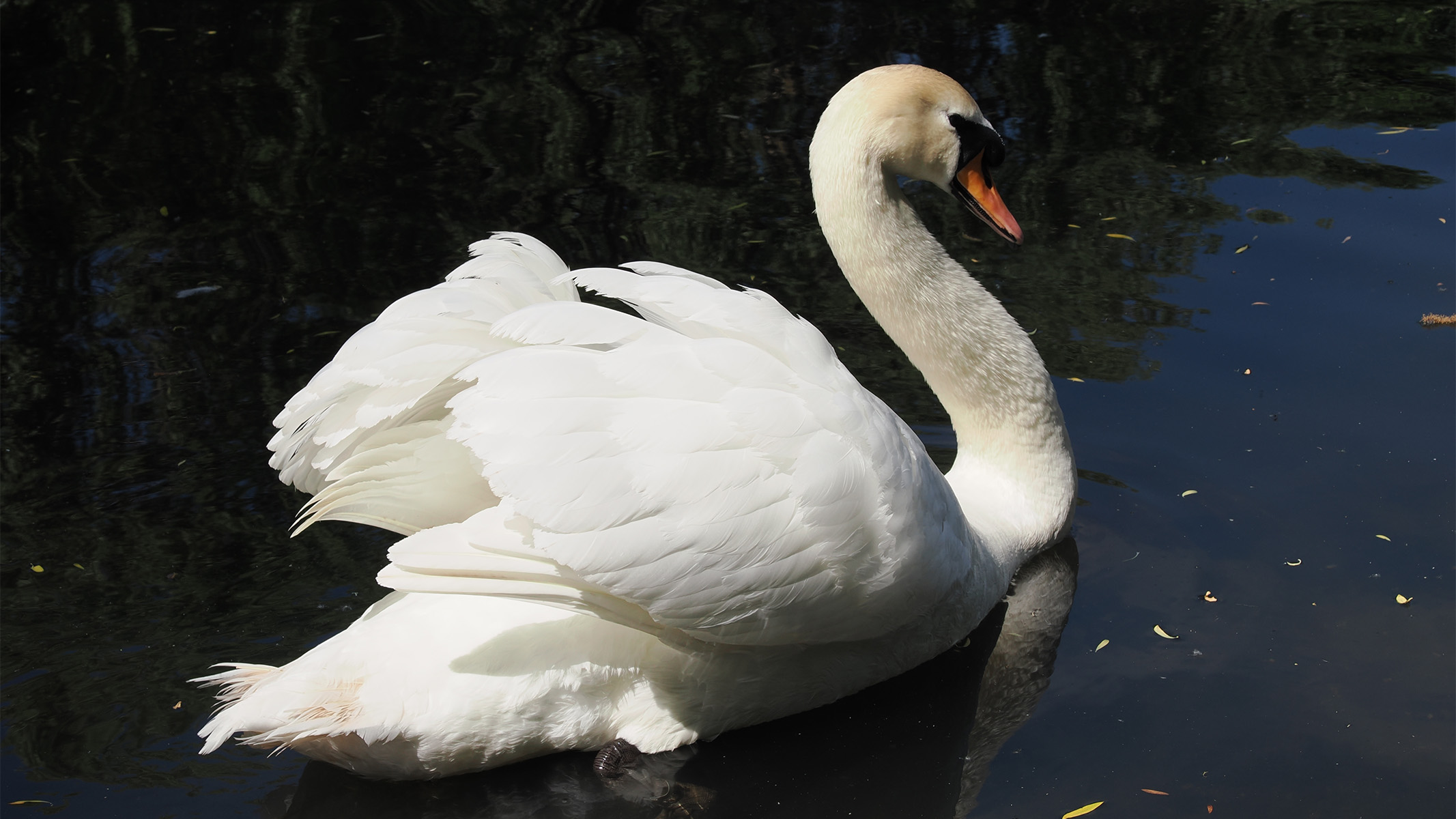
- Starry Sky AF mode for night sky captures
- Lightning-fast auto focus in daylight
- AI-enabled subject detection
Though there are aspects of its feature set that ensure the OM System OM-3 will appeal to particular specialists, with travel, landscape and astrophotographers being the most obvious ones, for everyday photography we don’t actually need to select Starry Sky AF or drill into the digital ND filter-like performance accessed via the Computational Photography button.
That is to say that the OM-3 works impressively well as an all-round photography tool for those who want to get hands-on and effect their own considered choices via the manual settings, or those who simply want to point and shoot with a retro camera that looks cool — and barely do anything more than that.

With a whopping 1,053 auto focus points, the camera’s AF works like a dream, ably locking onto our intended subjects in most scenarios. That said, the physical dials, levers and switches did tempt us into further experimentation — if only in the process of working out what they all do without having to drill into the whopping 560-plus pages of the online manual.
Like many of its rivals, the OM-3 has AI-enabled subject detection to direct focus to and track human subjects in the frame. Even if we recompose our shot, the AF point will drift over to that portion that has a human in it, even if it’s not the human head or face that’s facing the lens. But you can disable this tracking feature by simply switching to a different capture mode.
Astro & low light performance
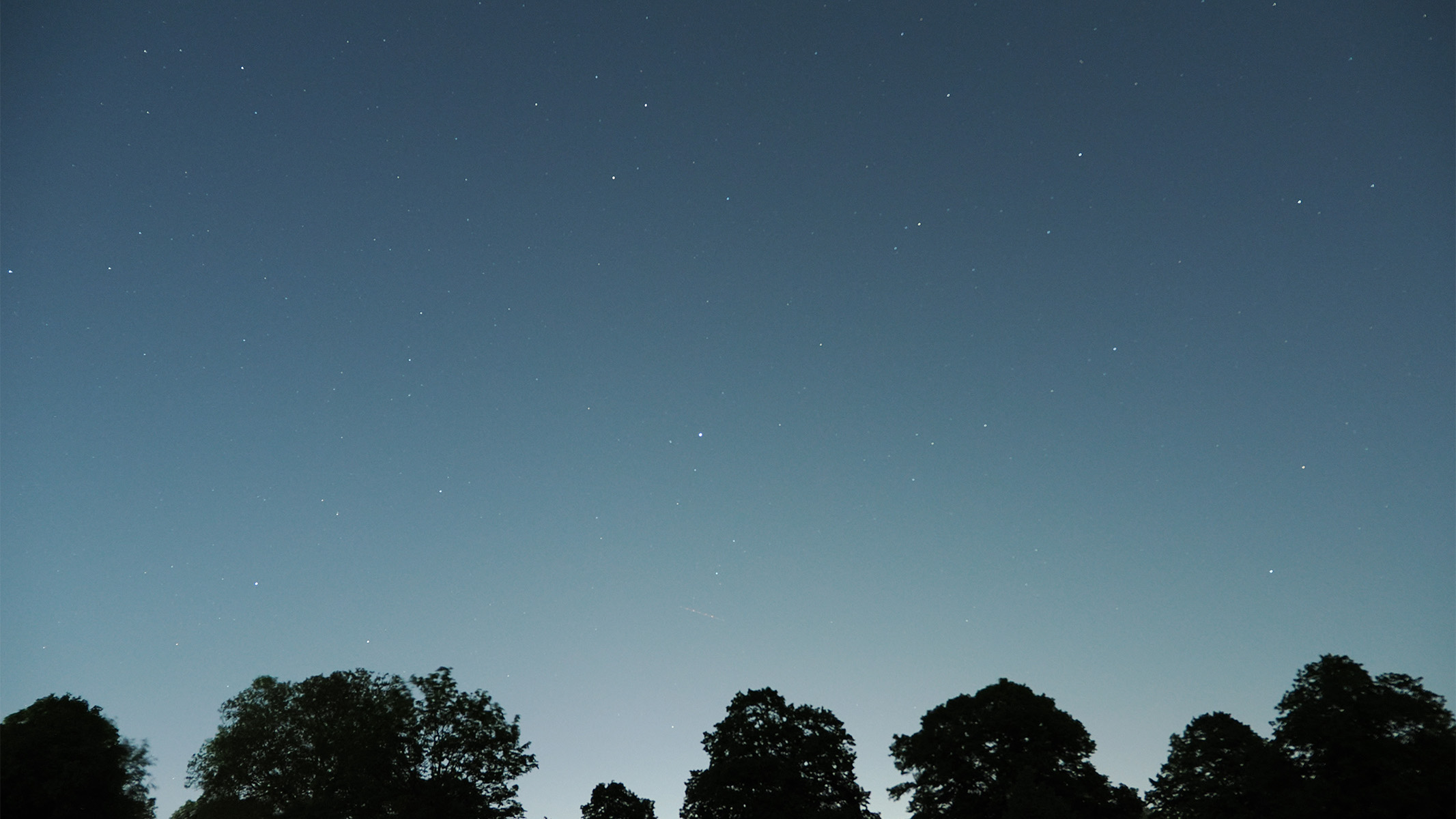
- See-in-the-dark auto focus capability across a wide frame of view
- Ability to manually tweak ISO light sensitivity, exposure duration and tweak colour temperature
- Five-axis built-in image stabilisation for low-light work
When shooting in pitch darkness, it’s a real boon that we’re able to implement the Starry Sky Auto Focus setting, which can be set to cover a wide area, enabling prolonged exposure times of anything up to one minute. However, we found that 15, 10 or 5 seconds turned out to be plenty for night sky captures and delivered the best results for us at any given time.
In tandem with the above, we were shooting wide open with our lens’ aperture set to its maximum f/4 brightness option, as well as choosing ISO3200 or ISO1600 light sensitivity, which we found to be the sweet spot, and were also able to tweak colour temperature on the fly to suit our desired tastes. With the ability to review shots on the back of the camera, we were able to make on-the-spot adjustments, even if the clearest picture of what we’d achieved was only shown once we’d uploaded images to our desktop back at home.

Shooting at the maximum wide-angle setting with selections made as above, we did notice some vignetting and corner shading right in the edges of our night sky captures, although on the plus side, this did help naturally draw the eyes towards what was happening in the central portion. With Starry Sky AF selected, we were impressed with how well the camera focused on the stars, which we also found to be true in our OM-1 Mark II review. We’re always sceptical that such non-standard features may be gimmicks to help bump up the specification, but that doesn’t prove to be the case here.
Burst rate, buffer & battery life
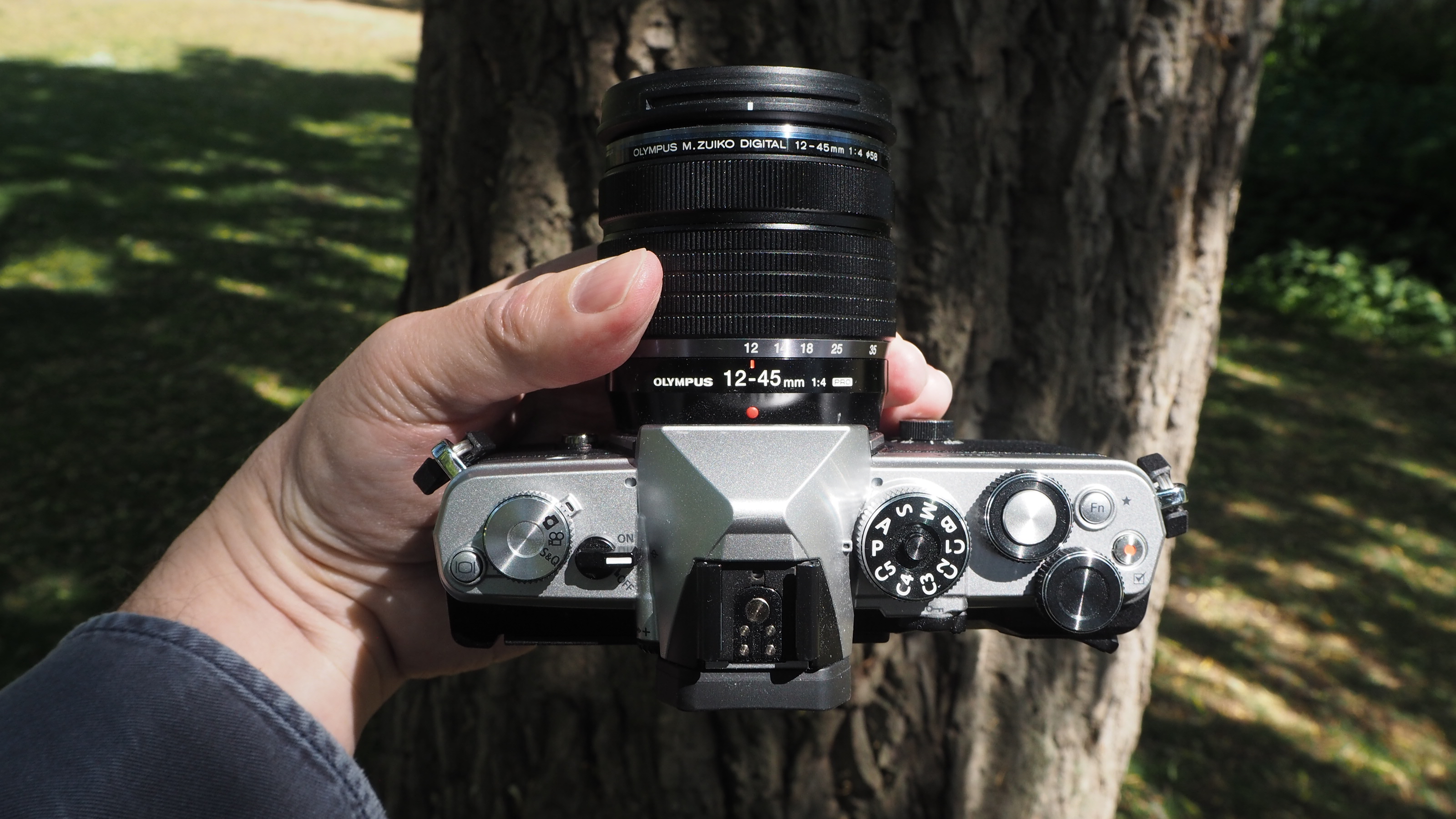
- 590 shot battery life
- Burst shooting up to 120fps
- Buffer supports capture of up to 88 RAW or 125 JPEG images
Shooting on cold nights as well as during the daytime and starting off with a fully charged battery, we had no complaints with the power performance of the OM System OM-3. Even if you don’t get a standalone mains charger in the box, its model BLX-1 lithium ion battery can be replenished in-camera via its USB port and any standard cable that comes with an Android smartphone.
Once fully juiced, the battery is good for up to 590 shots, which is a fair whack by consumer mirrorless camera standards, or around 2 hours of video. This longevity is also good news because, as noted earlier, there is no direct and immediate access to the battery compartment if the camera is mounted on a tripod.
If you are considering this camera for its burst shooting capabilities, then while its buffer performance does not quite match the flagship OM-1 Mark II, the OM-3 is still very impressive in this regard. We’re offered up to 120fps shooting in Pro and Silent Capture modes, or 50fps otherwise, with the camera’s buffer capable of supporting up to 88 RAW files or 125 JPEGs.
Verdict

Buy it if:
✅ You want a fully-featured, retro-styled camera with physical controls to supplement the touch-screen operation.
✅ You want an all-rounder that has a few astrophotography tricks up its sleeve.
Don’t buy it if:
❌ You are looking for a simple point and shoot, or at the other end of the scale, would prefer a full-frame sensor.
❌ You want a compact with a robust, rounded handgrip for handheld captures.
The retro styling and rangefinder-like controls of the OM System OM-3 make for a bold first impression and one that, we’re happy to report, is largely carried through the process of operating the camera and reviewing the results.
If you have doubts about the Micro Four Thirds sensor size, don’t: we were impressed by the sharpness and clarity of this mirrorless camera’s images as well as its DSLR-like swift response times.
In some respects, the OM-3 may come across as an OM-1 II ‘lite’, but it never feels like second best. The price being asked here also feels fair for a camera that should repay hours (years?) of investment in fully exploring its features.
If the OM System OM-3 isn’t for you
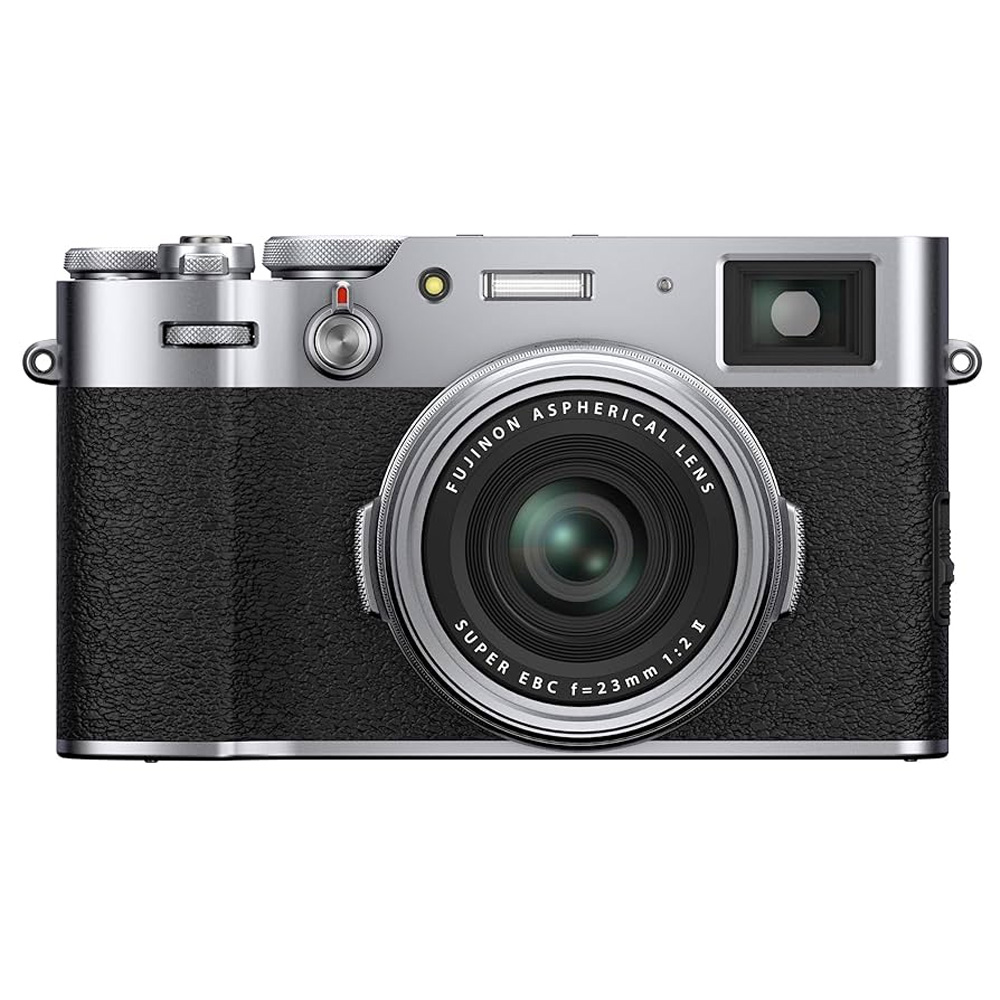
If you want a portable, compact mirrorless with a classic look then investigate the similarly priced Fujifilm X100V.
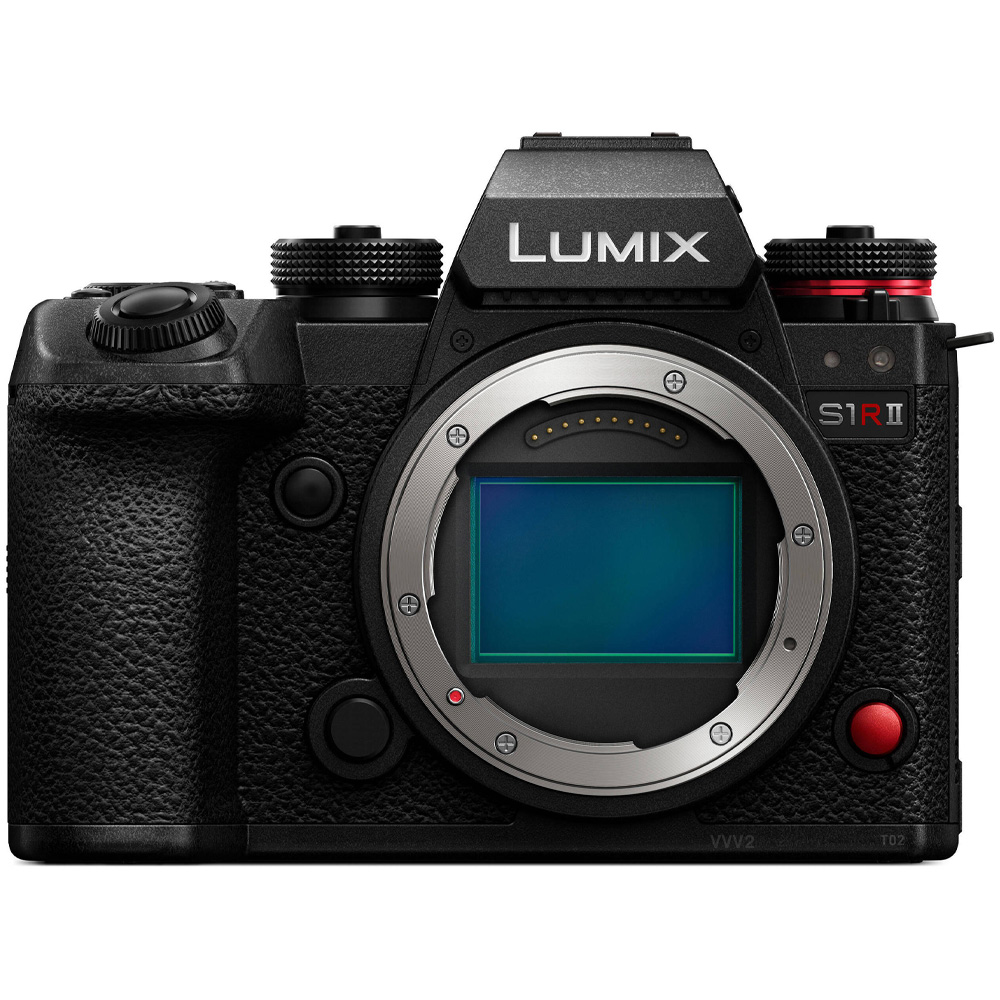
Also resembling a classic camera in shape and looks but not quite so retro is the equally fully-featured Panasonic Lumix S1R II, a hybrid model for those as interested in capturing video as much as stills.

Also majoring on video but slightly more portable and affordable — if not quite as flash-y looking because of it — is Canon’s recent EOS R50 V.
How we tested the OM System OM-3
Utilising an existing and relatively inexpensive Velbon tripod, we tested the OM System OM-3 camera body in tandem with the Olympus 12-45mm f/4 Pro lens. We took pictures in daylight, including strong sunshine, as well as in pitch black conditions at night. We then examined the results at full size on a desktop computer to scrutinise the level of detail and the fidelity of colour tones.
We opted to shoot Large, Super Fine compression level JPEGs in the main during our test period, which is the highest-quality, least-compressed JPEG setting selectable.
